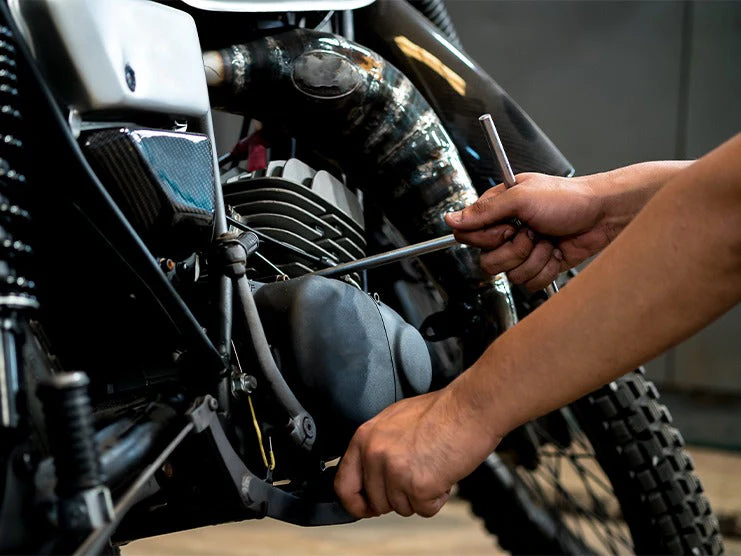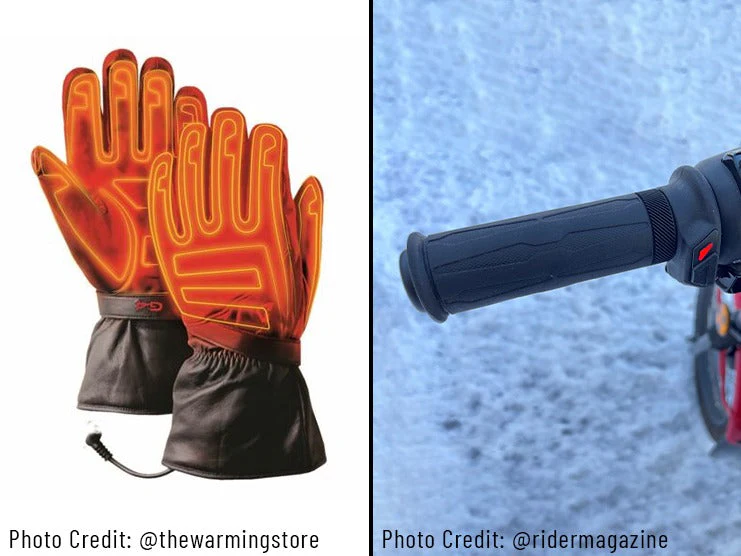The motorcycle engine requires clean oil to function correctly. If the oil filter is not replaced regularly, it can become clogged, limiting the amount of oil that passes through the filter and into the engine. If the air filter is covered with filth, dirt, metal particles, and other pollutants, it can send these contaminants into the engine along with oil, resulting in severe engine damage.
This article will guide you on how to change and maintain the oil filter.
Table of Content
1. What is an Oil Filter?

A motorcycle oil filter sifts out pollutants from the oil before it enters the engines required to cool and lubricate the engine components.
Before the oil reaches the engine, the oil filter removes any dust, dirt, or pollutants from the oil.
Furthermore, an engine oil filter can remove toxins from other types of oil as well, including water-driven oil, grease-up oil, and transmission oil.
1.1 Types of Oil Filters
Paper Oil Filters
Paper filters are the most common type of oil filter. They are readily accessible at any automobile shop and are the least expensive. They are made of wood fibers, cellulose, and cotton that create a fibrous structure.
Metal Oil Filters
Metal oil filters are made of steel that blocks heavier metal and dirt particles and permits clean oil to flow. They are capable of withstanding high pressure and heat without breaking.
Fiberglass Oil Filters
Fiberglass oil filters are the most popular pick due to having the best qualities of both paper and metal oil filters. They are as effective as paper oil filters and as durable as metal oil filters. They have fiberglass strands that filter out sludge, muck, and debris, allowing clean oil to pass through.
2. What Does the Motorcycle Oil Filter Do?
Bikes require engine oil to cool and lubricate the engine components, ensuring the engine provides adequate power to turn the wheels and accelerate the motorbike.
When you pour engine oil into the motorbike, it is possible that the oil may contain pollutants. The pollutants will mostly be of two types: metal and dust particles. Both pollutants are detrimental to the engine's durability and longevity. The dirt particles combine to become sludge that settles into the nooks and crannies on the components. The metal particles increase the rate of engine wear.
The oil filter removes dirt, metal, dust, grime, and other impurities from the engine oil.
3. Do All Motorbikes Have Oil Filters?
All bikes have a standard oil filter, regardless of their model, manufacturer, place of origin, and design.
4. When Should You Change Your Oil Filter?
The oil filter is a sealed metal part that makes it difficult to visually check and determine its current condition. There is no indicator or warning light to alert you when it is time to change the oil filter. You may not even realize the impact a filthy or blocked oil filter is having on your motorcycle’s engine. If you notice the following signs, it may indicate a blocked or filthy oil filter:
- Reduced performance
- Smoggy exhaust fumes
- Reduced oil pressure
- Engine overheating
A blocked or filthy filter may have the following effects:
- Engine wear and tear
- Reduced oil pressure
- Lack of internal engine lubrication
4.1 Engine Light
If the engine light turns on while riding, it might be due to a clogged oil filter. There are various factors that might cause this light to illuminate, and eliminating the inexpensive and simple items first is always a good idea. Replace the oil filter and check to see whether the engine light turns off.
4.2 Oil Change
Most modern automobiles need an oil change every 5,000 or 6,000 miles. Most motorcycle mechanics recommend getting the oil filter replaced every time your motorcycle gets a maintenance check. This is because newer motorcycle oil filters are so effective at filtering out particles that they become dirty much faster.
4.3 Rough Riding
If you ride aggressively by accelerating or braking suddenly or travel frequently in harsh weather conditions, you may need to change out the engine oil and oil filter more often. When rough riding, the engine needs to work harder, the oil becomes filthy more quickly, and the oil filter clogs more often.
5. Maintenance Tips for Oil Filters
5.1 Use Good-Quality Engine Oil
When the engine oil degrades, the oil filter’s efficiency decreases significantly.
You can choose between synthetic, semi-synthetic, and mineral oils depending on your motorcycle, the road conditions, and the state of the engine.
Synthetic and semi-synthetic oils must be replaced every 5,000 to 6,000 miles, while mineral oil must be replaced every 2,000 miles.
5.2 Change the Oil When You Replace the Oil Filter
Though changing the oil at the same time you replace the oil filter seems like the obvious thing to do, many bikers don’t for two reasons:
- Many motorcycle riders follow a strict oil change schedule. Many riders replace their oil based on the distance traveled (3500–5000 miles) or the amount of time that has passed (around four-six months).
- Many motorcycle riders only change the oil filter when absolutely necessary, such as an oil leak or faulty parts.
Many riders feel that the oil is still relatively new when the oil filter is replaced, so they see no need to replace the oil. As a result, new oil is added to make up for the oil lost when the filter was changed. However, this causes the new oil filter to come in contact with the relatively older oil, causing the oil filter to become slightly less effective.
5.3 Avoid Double Gaskets
Double gaskets on the oil filter are a common reason why oil leaks from the oil filter. When you replace the oil filter, the gaskets become stuck to the motorcycle. When you install a new oil filter, the new gaskets also become attached, resulting in double gaskets.
Double gaskets create a large space between the filter and the rest of the motorcycle. As a result, the oil filter will start to leak.
A leaking oil filter can be hard to notice, causing the oil levels to lower and the oil filter gaskets to become stuck together. You would be forced to get a new oil filter to fix this situation.
5.4 Use the Right Oil Filter
It is best to use oil filters recommended by the manufacturer or versions similar to the recommended oil filters.
When installing an oil filter on your motorbike, make sure it fits correctly and that no space is left for leakage to occur. When buying an oil filter, first check its model before seeing if it has similar specifications to the model recommended by the manufacturer.
5.5 Replace the Oil Filter Regularly
Changing the oil filter regularly is essential for the proper functioning of your motorcycle. You should replace an oil filter after every 5000-6000 miles.
Steps to Replace the Oil Filter
- Run the motorcycle engine until it is properly warmed up, then park the motorbike and let it cool.
- Set up the motorcycle’s center stand and place a pan below to catch any oil. Use a filter wrench to remove the oil filter. Be careful to not damage it as any dents on the filter can cause contaminants to enter the engine.
- As you remove the filter, the oil will start to drain. You may also need to adjust the position of the pan to avoid oil spillage.
- Then, take a new oil filter, add some oil to the O-ring, and install it using a filter wrench.
6. Last Words
A motorcycle oil filter ensures only clean oil enters the engine and prevents premature wear and tear. Maintaining oil filters is an important part of motorcycle maintenance. Make sure to use good-quality oil and oil filters, and change out the oil and oil filters on a regular basis. Motorcycle oil filters start becoming less effective after traveling around 5,000-6,000 miles, so it’s best to replace them every 5,000 miles. There are a variety of aftermarket parts available at Viking Bags, including sissy bars, crash bars, fairings, seats, luggage racks, and backrests.













Leave a comment
All comments are moderated before being published.
This site is protected by hCaptcha and the hCaptcha Privacy Policy and Terms of Service apply.